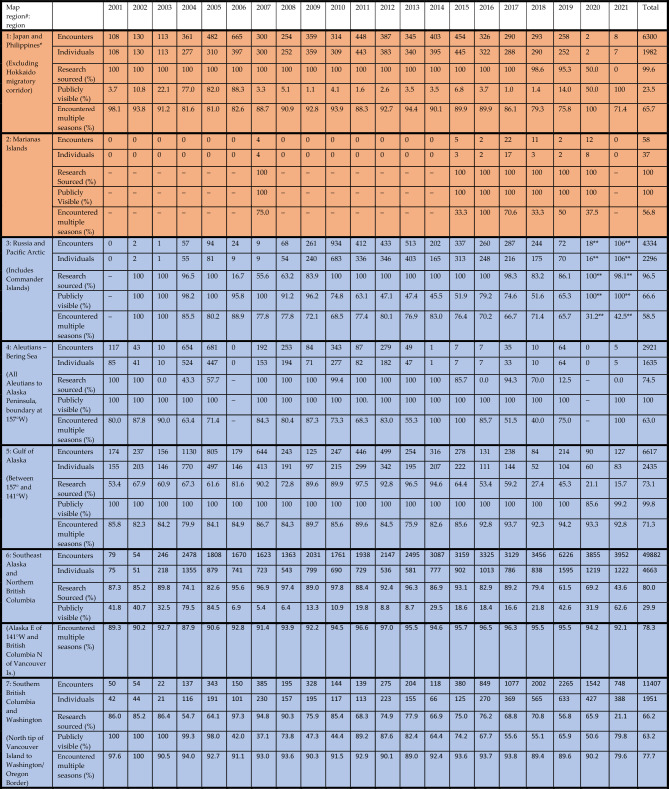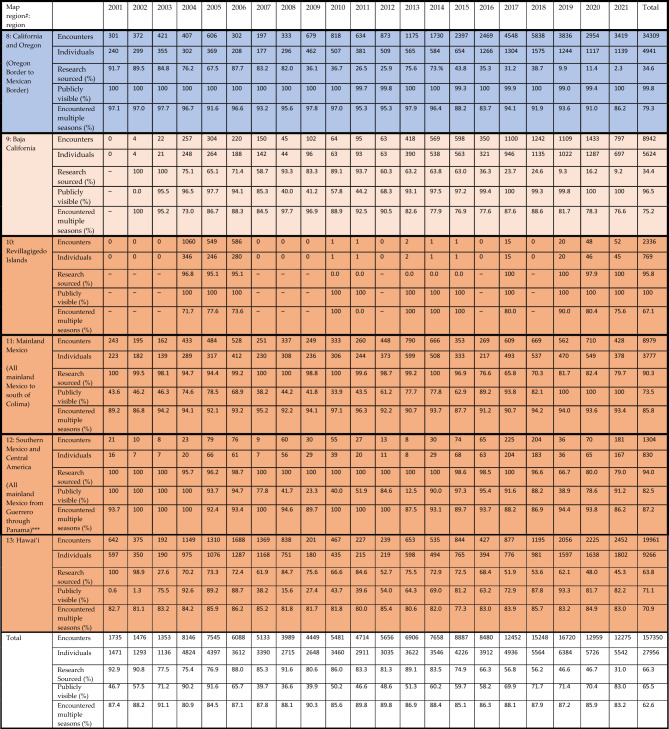Table 3.
2001–2021 humpback whale dataset with sample size and characteristics presented by region and year.
Encounters: a count of the total number of photo-ID documented encounters of individuals, defined as one encounter per individual whale per day. Individuals: count of unique identified individuals. Research sourced: percent subset of encounters sourced from NPPID collaborators, while all remaining encounters were sourced from community science efforts. Public: percent subset of encounters visible to all users of Happywhale, while all remaining encounters are visible only to NPPID collaborators. Multiple seasons: a count of identified individuals documented in more than one season during the study, overall total for all years in final column. Seasons: north of 32.55°N = feeding regions (blue) data by calendar year; south of 32.55°N = migratory corridor (tan) and breeding regions (orange) data by breeding season, defined as 1 August through 31 July (i.e., a December 2015 encounter in Hawaiʻi is considered to be in the 2016 breeding season).
*Japan and Philippines data limited to one encounter per individual per year. **Russia 2020 and 2021 data limited to new individuals. ***Central America data from Nicaragua to Panama excludes Southern Hemisphere migrants encountered November through April of each year.


